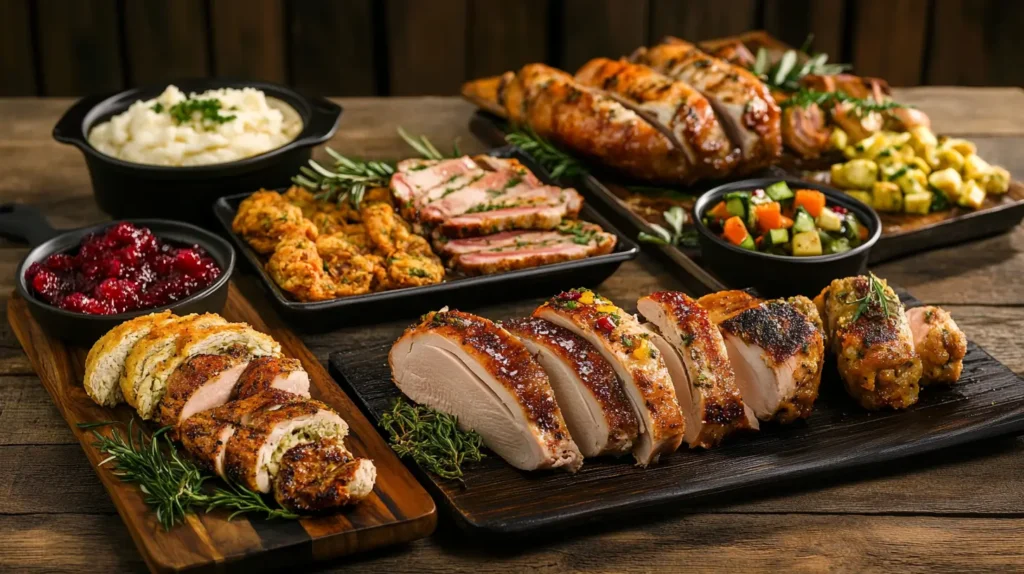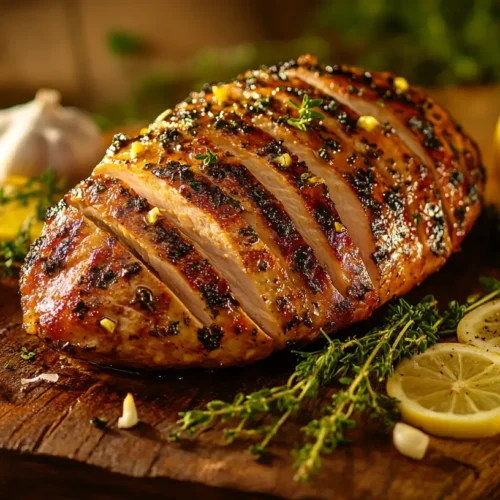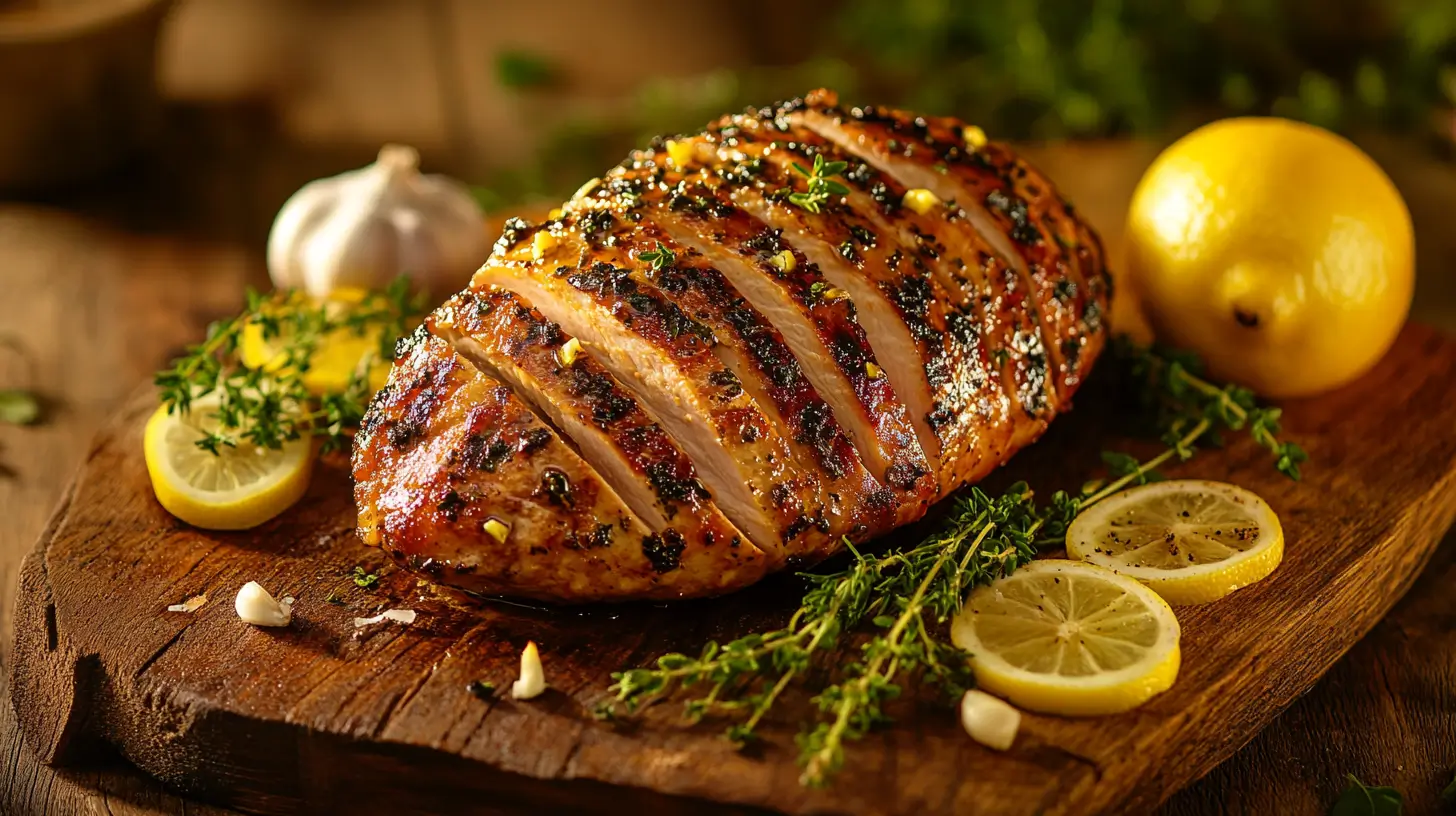There’s something deeply satisfying about preparing a meal from a wild turkey you’ve harvested yourself. Unlike its domesticated counterpart, wild turkey offers a distinctive eating experience—leaner meat, more complex flavors, and the pride that comes from cooking something truly connected to the land.
This guide will walk you through everything you need to know to transform this magnificent game bird into delicious meals your family and friends will rave about.
Table of Contents
The Appeal of Wild Turkey
Wild turkey isn’t just an alternative to store-bought poultry—it’s an upgrade in many ways. The birds’ natural diet and active lifestyle create meat that’s notably different from what you’ll find shrink-wrapped at the supermarket.
Nutritional Powerhouse
- Superior Protein Source – Wild turkey contains roughly 30% less fat than farm-raised birds while offering more protein per serving.
- Nutrient-Dense – These birds accumulate an impressive array of B vitamins, iron, and selenium from their varied natural diet.
- No Additives – Unlike commercial turkeys, wild birds haven’t been injected with salt solutions, preservatives, or other additives.
For those looking to reconnect with traditional food sources or enjoy meat that hasn’t been subjected to industrial farming practices, wild turkey represents both a culinary adventure and nutritional wisdom.
From Field to Table: Preparation Essentials
Proper preparation is crucial when working with wild turkey. Each step influences the final flavor and texture of your dishes.
Field Dressing and Initial Cleaning
Time matters when processing your bird:
- Remove internal organs promptly after the harvest to prevent spoilage.
- Cool the carcass quickly, especially in warm weather.
- Thoroughly rinse the cavity to remove any blood or debris.
- Pat dry with paper towels before further processing.
The Magic of Brining
Brining is particularly important for wild turkey, as it helps counter the meat’s natural leanness.
Basic Wild Turkey Brine:
- 1 gallon cold water
- 1 cup kosher salt
- ½ cup brown sugar
- 3 cloves garlic, crushed
- 2 bay leaves
- 1 tablespoon whole peppercorns
- Optional: 2 sprigs rosemary and lemon slices
Brining Process:
- Combine ingredients in a large container, stirring until salt and sugar dissolve.
- Submerge the turkey parts completely.
- Refrigerate for 12-24 hours (breast pieces) or up to 36 hours (legs and thighs).
- Rinse thoroughly before cooking and pat dry.
For those interested in seasoning options, check out this Deep-Fried Turkey Seasoning for bold and flavorful ideas.
Must-Try Wild Turkey Recipes
These tried-and-true methods highlight wild turkey’s unique characteristics while ensuring moist, flavorful results.
Herb-Roasted Wild Turkey Breast
Ingredients:
- 1 wild turkey breast (2-3 pounds)
- 3 tablespoons butter, softened
- 2 tablespoons olive oil
- 2 garlic cloves, minced
- 1 tablespoon fresh thyme leaves
- 1 tablespoon fresh rosemary, chopped
- 1 teaspoon lemon zest
- Salt and pepper to taste
Directions:
- Preheat oven to 325°F.
- Mix butter with herbs, garlic, lemon zest, salt, and pepper.
- Rub mixture under the skin and all over the turkey breast.
- Place in a roasting pan and drizzle with olive oil.
- Roast for 20 minutes per pound or until the internal temperature reaches 160°F.
- Let rest for 15 minutes before slicing.
For those who love turkey-based breakfast options, try making Breakfast Turkey Sausage for a healthy and protein-packed start to the day.

Beyond the Basics: Creative Turkey Dishes
Wild turkey’s versatility extends beyond traditional roasting. These creative applications showcase its adaptability.
Hearty Wild Turkey Chili
Transform tougher cuts into a rich, satisfying chili by:
- Grinding turkey meat with a food processor or grinder.
- Browning with onions and garlic.
- Adding beans, tomatoes, and chili spices.
- Simmering for 2-3 hours to develop deep flavors.
For more cozy meal ideas, check out these One-Pot Winter Soups—perfect for using leftover turkey!
Pro Tips for Perfecting Wild Turkey
Even experienced cooks can benefit from these specialized techniques for wild turkey:
Temperature Management
- Don’t Trust Time Alone – Always use a meat thermometer.
- Target Temperatures:
- Breast meat: 160°F (carryover cooking will bring it to 165°F).
- Dark meat: 175°F for optimal tenderness.
Moisture Preservation
- Barding – Drape thin bacon slices over breast meat while roasting.
- Frequent Basting – Use butter, broth, or marinade to keep the surface moist.
- Low and Slow Cooking – Lower temperatures yield juicier results.
Common Questions About Cooking Wild Turkey
How does wild turkey differ from store-bought turkey?
Wild turkey has half the fat content of farm-raised birds, a darker meat profile, and more pronounced flavor due to a natural diet and active lifestyle.
What are the best cooking methods for different parts of the bird?
Breast – Best roasted, grilled, or fried.
Legs and Thighs – Ideal for slow cooking, smoking, or braising.
Wings – Great for making stock.
What flavors complement wild turkey best?
Wild turkey pairs beautifully with:
Herbs: Sage, thyme, rosemary, and bay leaf.
Fruits: Cranberries, apples, citrus, and dried cherries.
Aromatics: Garlic, onion, celery, and carrots.
Seasonings: Paprika, black pepper, juniper berries, and allspice.
Conclusion
Cooking wild turkey connects us to culinary traditions that predate modern agriculture, offering both nutritional benefits and unique flavors impossible to find in commercially raised birds.
Whether you’re a hunter processing your own harvest or someone fortunate enough to receive wild turkey as a gift, the techniques and recipes in this guide will help you make the most of this special protein.
Each wild turkey is different—adaptability is key. Experiment with different methods until you find what works best for your taste preferences and the particular bird you’re preparing. With proper techniques and patience, wild turkey can become one of the most anticipated meals in your kitchen.

Herb-Roasted Wild Turkey Breast
Equipment
- Roasting Pan
- Meat Thermometer
Ingredients
- 1 wild turkey breast (2-3 pounds)
- 3 tablespoons butter, softened
- 2 tablespoons olive oil
- 2 cloves garlic, minced
- 1 tablespoon fresh thyme leaves
- 1 tablespoon fresh rosemary, chopped
- 1 teaspoon lemon zest
- Salt and black pepper to taste
Instructions
- Preheat oven to 325°F.
- Mix butter with herbs, garlic, lemon zest, salt, and pepper.
- Rub the mixture under the skin and all over the turkey breast.
- Place the turkey in a roasting pan and drizzle with olive oil.
- Roast for approximately 20 minutes per pound, or until the internal temperature reaches 160°F.
- Let rest for 15 minutes before slicing. The internal temperature will rise to 165°F while resting.

